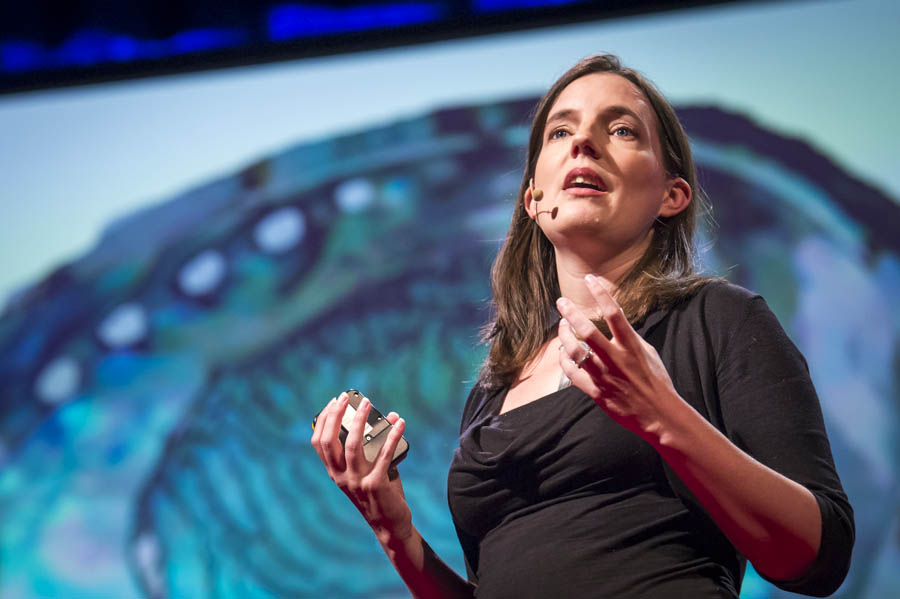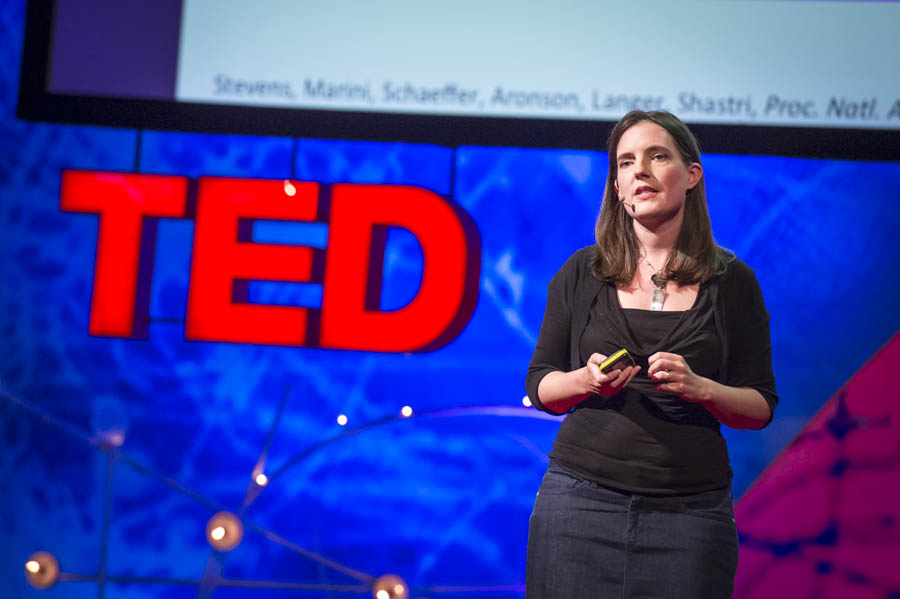Molly Stevens would like to introduce you to the first blue tooth. No literally, a blue tooth made out of shell. In the days of the ancient Mayans, when a tooth was lost, it would be replaced with bit of blue shell. The chemistry and architecture of this shell worked beautifully as a tooth replacement, and would even, eventually, integrate into the jaw.
Stevens works with biomaterials, and she’s fascinated by the way materials can be creatively used in the body to improve health and minimize suffering. She gives another example: a physician who worked with fighter plane pilots and noticed that they’d often get shards of material in their eye — plastic from the shell of the plane. Because it produced no inflammatory response, he realized he could use this same plastic to create a lens to be placed directly into the eye — the first intraocular lenses, which are now used for cataracts.
This brings us to Stevens’ work with bones, which are easily broken and fairly good at repairing themselves. But in some cases, they just aren’t able to. When that happens, doctors do what’s known as an “iliac crest graft” — they take pieces of bone from a patient’s hip and transplant it where it is needed. The problem is that there’s only so much iliac crest one can take, and the patient will have pain for years.
“There’s a tremendous need for bone repair,” says Stevens on the TEDGlobal 2013 stage. “Could we create a regeneration of the bone inside the body, on demand, without any of the pain that you would have with the iliac crest harvest?”
Stevens’ team has created a system, using materials creatively, to allow the body to create its own new bone. It’s called “in vivo bioreactor.” The procedure takes advantage of a layer of stem cells — the periosteum — along the long bones of the leg. Getting to these stem cells is not easy, as the layer binds tightly to the bone. So a saline liquid is injected under the periosteum. The liquid hardens to a gel that lifts the periosteum off the bone. This bioreactor cavity gives the stem cells the structure they need to grow into bone. From there they can harvest it, and use it as needed. Afterward, the periosteum grows back and the original area is as good as new.
Through this procedure they can “generate massive amounts of bone,” says Stevens as she shows a slide zooming in on the structure of this harvested bone versus the original bone; it is barely distinguishable. This innovation led to quite a bit of press — and some creative thinking. Stevens says her lab got a call from a group of American football players who wanted to use the procedure to develop thicker skulls.
Similar work in biomaterials is happening in other fields too, says Stevens. For example, many labs are working on materials to help repair the heart after a heart attack, where the tissue dies and becomes stiff. The key: creating a material that gives the proper structure so that blood vessels can grow; it would also need to be conductive, to allow for heartbeats.
Stevens is clearly entranced by the potential of biomaterials. “Being able to work in this field, it’s super exciting science,” she says. “It has the potential to have impact on people’s lives, however big or small. It’s really a great privilege.”


Comments (9)
Pingback: Spotlight on Professor Molly Stevens
Pingback: How to regenerate bone: Molly Stevens at TEDGlobal 2013 | A Secret Secret
Pingback: Regeneration: The speakers in Session 7 at TEDGlobal 2013 | Krantenkoppen Tech